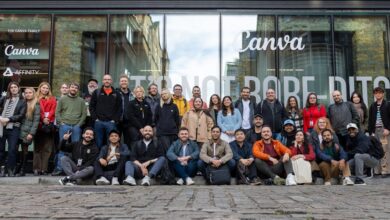Hard Work Is Dead: Why Leverage (Not Hustle) Rules the Creator Economy

Hard Work Is Dead: Why Leverage (Not Hustle) Rules the Creator Economy
Estimated reading time: 9 minutes
Key Takeaways:
- Sheer effort alone is an outdated myth; **leverage** is the true driver of exponential growth in the creator economy.
- The Work Equation (Work = Volume × Leverage × Impact) highlights leverage as the critical multiplier that amplifies your efforts.
- **Permissionless leverage** (code, content, community) empowers modern creators to scale their impact without needing external approval.
- Conducting a Leverage Stack Audit helps identify where to move from 1:1 manual effort to 1:many automated systems.
- Shifting to an exponential mindset means constantly seeking ways to achieve 10x results from the same effort by optimizing for leverage.
- The Effort Delusion: Why More Hours Don’t Mean More Results
- Unlocking Exponential Growth: Permissionless Leverage
- Your Leverage Stack Audit: Moving Beyond 1:1 Effort
- Actionable Steps to Supercharge Your Leverage
- The Exponential Mindset Shift
- FAQ: Frequently Asked Questions
In the relentless pursuit of success, especially within the booming creator economy, a dangerous myth persists: that sheer effort alone guarantees results. We’re told to hustle harder, work longer, and sacrifice more. But what if the playbook you’re following is fundamentally flawed? What if the secret to exponential growth isn’t about how much you sweat, but how smartly you apply your energy?
Consider this profound truth: “If you have four hours to cut a tree with an axe, spend three sharpening the axe. If you have six hours, find a chainsaw. Most creators are still using dull axes while their competition is operating chainsaws.”
Let me show you what I mean. The difference between struggling and soaring often boils down to one critical factor: leverage.
Creator A works 12-hour days writing blog posts, manually posting to social media, responding to every comment individually, and doing everything themselves. After a year, they have 1,000 followers and make $500/month.
Creator B works 4-hour days building systems, using automation tools, creating templates, and focusing only on high-leverage activities. After a year, they have 50,000 followers and make $15,000/month.
Same talent. Same market. Different understanding of leverage.
The difference isn’t just about effort. It’s encapsulated by the fundamental Work Equation:
Work = Volume × Leverage × Impact
- Volume is the intensity of inputs: 100 cold emails, 10,000 words, 500 squats.
- Leverage is the multiplier: the tools or systems that amplify your efforts.
- Impact is how much your outputs move the needle.
Most creators obsess over Volume (working harder) while completely ignoring Leverage (working smarter). This is precisely why they stay trapped in linear growth while exponential creators pull ahead, seemingly effortlessly.
The Effort Delusion: Why More Hours Don’t Mean More Results
Here’s the toxic belief that’s killing your potential: “If I just work harder, I’ll get better results.” This isn’t just a misconception; it’s industrial-age thinking trapped in a digital-age world. In an era where your job was to move physical boxes from Point A to Point B, more effort literally meant more results. More hours meant more boxes moved, which directly translated into more money earned. It was a linear equation.
But in the Creator Economy, effort without leverage is simply expensive activity. It’s akin to digging a trench with a spoon when a backhoe is available. You can spend 100 hours writing blog posts that nobody reads, or 10 hours building a system that generates traffic automatically for the next year. You can manually respond to 1,000 DMs, or create one piece of evergreen content that answers everyone’s question simultaneously. You can pitch 100 clients individually, or build one automated funnel that qualifies and converts prospects while you sleep.
The world doesn’t reward mere effort; it rewards results. And in the modern landscape, the most impressive results are generated not through brute force, but through intelligent application of leverage.
Unlocking Exponential Growth: Permissionless Leverage
In essence, there are only two types of leverage available to you:
1. Permissioned Leverage (The Old Game)
This is leverage that somebody else has to grant you. Historically, this was the primary path to wealth and influence. It includes:
- Labor: Hiring people to work for you.
- Capital: Borrowing or raising money to invest.
- Land: Acquiring physical assets or prime locations.
Permissioned leverage is incredibly powerful, but it inherently requires permission. You need someone else to say “yes” – banks to lend, investors to fund, individuals to employ. For centuries, this was the exclusive gateway to significant expansion.
2. Permissionless Leverage (The New Game)
This is the game-changer, the leverage you don’t need anyone’s consent to use. We are living in an unprecedented age where permissionless leverage is widely accessible:
- Code: Software that works tirelessly 24/7 without breaks, salaries, or complaints. Think algorithms, automation, and digital platforms.
- Content: Ideas, once created, that can reach millions without additional effort per view or listen. Blogs, videos, podcasts, and digital courses.
- Community: Networks that grow exponentially through connection, shared purpose, and organic referrals, creating a self-sustaining ecosystem.
For the first time in human history, anyone with an internet connection can build software that serves millions, create content that reaches global audiences, and access tools that once required entire teams and massive budgets. You now have absolute freedom to create the life and business you want—if you understand how to harness this new form of power.
Your Leverage Stack Audit: Moving Beyond 1:1 Effort
To truly understand where you stand and where you can grow, it’s vital to identify where you’re currently stuck in 1:1 effort versus leveraging 1:many systems. Consider your activities across these four levels of the leverage stack:
Level 1: Manual Labor (1:1 Ratio)
- Writing individual emails
- Creating custom proposals for each client from scratch
- Manually posting to social media on the fly
- Having the same conversation repeatedly with different people
Leverage Multiplier: 1x (Your output directly equals your input)
Level 2: Templates & Systems (1:10 Ratio)
- Utilizing email templates that can be quickly customized
- Following standard operating procedures (SOPs) for routine tasks
- Implementing content calendars and batching content creation
- Setting up automated email sequences for common inquiries
Leverage Multiplier: 10x (One hour of focused work generates ten hours of output)
Level 3: Software & Automation (1:100 Ratio)
- Deploying tools that work without your constant attention (e.g., CRMs, marketing automation)
- Building systems that qualify prospects automatically, saving you time
- Creating evergreen content that generates traffic and leads months after creation
- Developing digital products that sell while you sleep
Leverage Multiplier: 100x (One hour of setup generates hundreds of hours of output)
Level 4: Network Effects & Exponential Systems (1:∞ Ratio)
- Cultivating communities that grow themselves through member interaction
- Producing viral content that spreads organically through social sharing
- Establishing referral systems that compound over time
- Building platforms where users create value for each other (e.g., marketplaces)
Leverage Multiplier: ∞ (Output becomes virtually independent of your continuous input)
Actionable Steps to Supercharge Your Leverage
Ready to move from the dull axe to the chainsaw? Here are three concrete steps to upgrade your leverage and transform your workflow:
Actionable Step 1: Conduct an Effort Inventory
List every single task you perform in a typical week. Be exhaustive. For each activity, ask yourself these critical questions:
- Could this task be completely automated with software or a simple rule?
- Could I create a template, script, or checklist for this, so I only do the core work once?
- Could this activity be eliminated entirely without negative consequences?
- Could this be done once and then used many, many times over?
Be ruthless in your assessment. You’ll likely discover that a significant portion of what you’re doing manually can be leveraged at a higher level.
Actionable Step 2: Perform the 80/20 Leverage Analysis
Identify the 20% of your activities that genuinely generate 80% of your results. These are your highest-impact efforts. Now, with these core activities in mind, ask: “How can I apply more leverage to these critical functions?”
For example, if writing is your highest-impact activity, how can you:
- Write one core piece of content and strategically distribute it everywhere?
- Turn that one article into multiple formats (podcast, video, social media threads)?
- Create systems (like an SEO strategy) that amplify your writing’s reach and longevity?
Actionable Step 3: Build Your Permissionless Leverage Stack
Start consciously assembling your personal arsenal of permissionless leverage tools. Think strategically across these three pillars:
Code/Software Stack:
- Email automation platforms (e.g., ConvertKit, Mailchimp) to nurture your audience.
- Social media scheduling tools (e.g., Buffer, Hootsuite) to maintain consistent presence.
- Landing page builders (e.g., Framer, Webflow) for rapid deployment of offerings.
- Analytics and tracking tools (e.g., Google Analytics) to inform your strategy.
Content Stack:
- Implement repurposing systems (one article becomes 10 social posts, a newsletter, and a video script).
- Master SEO optimization to ensure your content works for you for months or years.
- Integrate video/audio content for higher engagement and broader reach.
- Focus on educational content that solves problems and scales infinitely.
Community Stack:
- Prioritize email list building – your owned audience is your most valuable asset.
- Cultivate a social media following that genuinely engages with your work.
- Nurture strong network connections for referral leverage and strategic partnerships.
- Explore collaborations with other creators to share and amplify your reach.
The Exponential Mindset Shift
This isn’t just about tools; it’s about a fundamental shift in perspective. Linear thinkers trapped in the “hustle culture” ask: “I have so much to do but not enough time, how can I work more hours?” Exponential thinkers, on the other hand, constantly ask: “How can I get 10x results from the same effort?”
Linear thinkers optimize for busy. Exponential thinkers optimize for leverage. The most successful creators work less but achieve more because they’ve mastered the leverage equation. They’ve moved beyond the illusion that effort equals reward and embraced the reality that smart leverage creates disproportionate impact.
Your Leverage Challenge: For the next 24 hours, before every single task you undertake, ask yourself: “Is this a 1:1 activity or a 1:many opportunity?” If it’s a 1:1 activity, commit to one of these actions:
- Eliminate it: Does it truly need to be done?
- Delegate it: Can someone else (or even AI) handle this?
- Systematize it: Can I create a process or template to make this faster next time?
- Or do it once and never again: Find a permanent, scalable solution.
Remember: Your time is finite, but your leverage is infinite.
FAQ: Frequently Asked Questions
- What is “leverage” in the context of the creator economy?
Leverage refers to the tools, systems, and strategies that amplify your effort, allowing you to achieve disproportionately larger results from the same or even less input. It’s about working smarter, not just harder.
- What are the two main types of leverage discussed in the article?
The article distinguishes between **Permissioned Leverage** (like labor, capital, and land, requiring external approval) and **Permissionless Leverage** (like code, content, and community, accessible to anyone with an internet connection).
- How can I start applying permissionless leverage today?
Start by auditing your current tasks to identify 1:1 activities. Then, explore how code/software (automation tools, templates), content (repurposing, evergreen assets), and community (email lists, network effects) can transform those into 1:many opportunities.
- What’s the difference between linear and exponential thinking?
Linear thinkers focus on “working more hours” to do “more things.” Exponential thinkers, however, focus on “how can I get 10x results from the same effort” by identifying and implementing high-leverage strategies and systems.
- Why is “hustle culture” considered a myth for modern creators?
Hustle culture, with its emphasis on sheer volume of effort, is seen as industrial-age thinking. In the digital creator economy, effort without strategic leverage is inefficient and often leads to burnout without commensurate results. Modern success rewards impact and smart application of energy, not just brute force.
Cheers,
Praise J.J.
P.S. If you’re feeling overwhelmed by all the leverage possibilities, start with just one. Pick the activity you do most often and find ONE concrete way to add leverage to it. Small leverage compounds into massive results.
If you want to learn more insightful things like, subscribe to read more here. Or click subscribe on HackerNoon.





